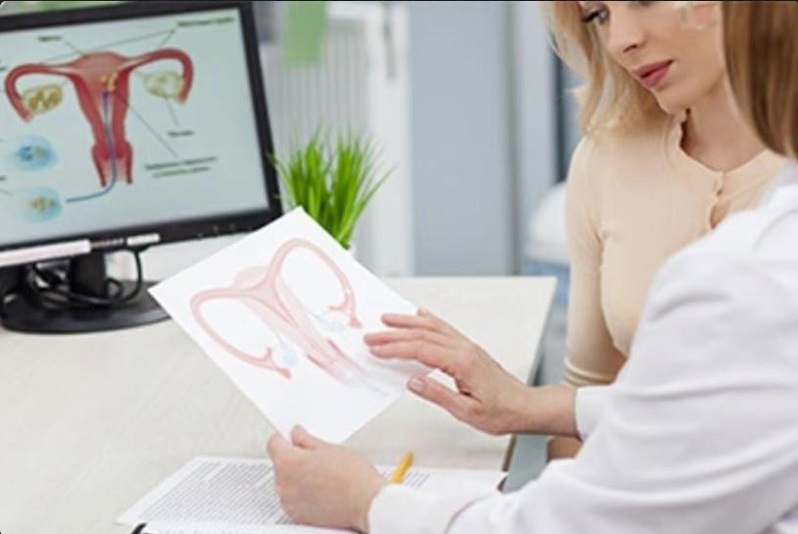Toxic Metal Exposure and Its Impact on Women Approaching Menopause: A Comprehensive Study-Menopause, a natural phase in a woman’s life, marks the end of monthly periods. However, new research suggests that exposure to toxic metals during the menopausal transition may have far-reaching consequences on women’s ovarian health.
Toxic Metal Exposure and Its Impact on Women Approaching Menopause: A Comprehensive Study

Understanding Menopause
Menopause is a gradual process that typically occurs between the ages of 45 and 55, lasting about seven years. This transition involves changes in menstrual cycles, accompanied by symptoms like hot flashes and night sweats.
The Role of Heavy Metals in Women’s Reproductive Aging
Heavy metals such as arsenic, cadmium, mercury, and lead are pervasive in our environment, and present in drinking water, air pollution, and food. These endocrine-disrupting chemicals have been linked to reproductive aging and diminished ovarian reserve.
Research Findings
A recent study, led by Sung Kyun Park, Associate Professor of Epidemiology and Environmental Health Sciences, the University of Michigan, reveals a significant correlation between heavy metal exposure and lower levels of Anti-Mullerian hormone (AMH) in middle-aged women. AMH serves as a biological clock for ovaries, indicating the number of eggs left.
Impact on Health
The implications of high metal exposure extend beyond reproductive health. Women with elevated metal levels in their urine samples were more likely to exhibit lower AMH levels, potentially leading to health issues like hot flashes, bone weakening, osteoporosis, heart disease, and cognitive decline.

Expert Opinion
Sung Kyun Park emphasizes the need to consider toxins in heavy metals as potential contributors to ovarian health issues. The study highlights the importance of understanding the impact of chemicals on ovarian health in both middle-aged and younger populations.
Study Participants and Data Analysis
The research involved 549 middle-aged women transitioning to menopause with detectable levels of arsenic, cadmium, mercury, or lead in their urine. Analysis of AMH blood tests spanning up to a decade before their final menstrual periods revealed a clear association between metal exposure and diminished ovarian reserve.
Specific Metals and Their Effects
Certain metals, such as arsenic and cadmium, possess endocrine-disrupting characteristics, potentially exerting toxic effects on the ovaries. This raises concerns about the widespread exposure to such toxins and its impact on women’s health.
Call for Further Research
While this study provides valuable insights, Sung Kyun Park urges further research to understand the role of chemicals in diminished ovarian reserve, especially in younger women. This calls for a more comprehensive examination of the chemical impact on fertility.
Conclusion
In conclusion, the study underscores the significance of heavy metal exposure in influencing ovarian health during menopause. The findings point to potential health risks and emphasize the need for a broader understanding of the impact of chemicals on women’s reproductive health.
Frequently Asked Questions (FAQs)
FAQ 1: How does heavy metal exposure affect ovarian reserve?
Heavy metal exposure can impact ovarian reserve by lowering levels of anti-Mullerian hormone (AMH), indicating fewer eggs in the ovaries.
FAQ 2: Can menopausal symptoms be alleviated by reducing heavy metal exposure?
While reducing heavy metal exposure may help manage symptoms, it’s essential to consider various factors contributing to menopausal discomfort.
FAQ 3: Are there practical ways to minimize heavy metal intake?
Practical measures include consuming filtered water, choosing organic foods, and minimizing exposure to industrial pollutants.
FAQ 4: Should all women approaching menopause be concerned about heavy metal exposure?
Awareness is crucial, but individual risk factors vary. Consulting with a healthcare professional can provide personalized guidance.
FAQ 5: What steps can women take to protect themselves from the potential impacts of heavy metals on ovarian health?
Protective measures include a balanced diet, regular exercise, and minimizing exposure to environmental sources of heavy metals.